Good morning pilots,
This is an urgent appeal to all pilots to avoid disrupting fire-fighting operations currently being conducted in the Western Cape. This notice is aimed primarily at paraglider and hang glider pilots, but the sentiment may be extended to all recreational pilots.
Fire-fighting operations
The fire-fighting teams are made up of a handful of heavy helicopters which pick up water from a nearby water-source, as well as a single-engine air tanker that collects 3 tons of water from nearby aerodromes. These aircraft and helicopters are then directed by a circling spotter aircraft which controls the entire operation from the air.
Because of the high number of fires breaking out (more on this later), these operations are often reassigned to new fires at short notice.
Possibility of a NOTAM to close airspace
Yesterday evening I met with Greg Critchley (ARCC) as well as Frank Smook (Operations Manager at Kishugu). We discussed two incidences of paraglider pilots inadvertently disrupting fire-fighting operations:
- A paraglider pilot flew along the mountain from the direction of Du Toit’s Kloof towards Porterville, crossing the path of helicopters collecting water from Voëlvlei dam. This pilot inadvertently disrupted helicopter operations, with the spotter aircraft and seven helicopters orbiting unproductively (and at great cost) for an extended period.
- On Saturday a paraglider pilot launched from Devil’s Peak, and flew directly above the fire-fighting operation at Table Mountain.
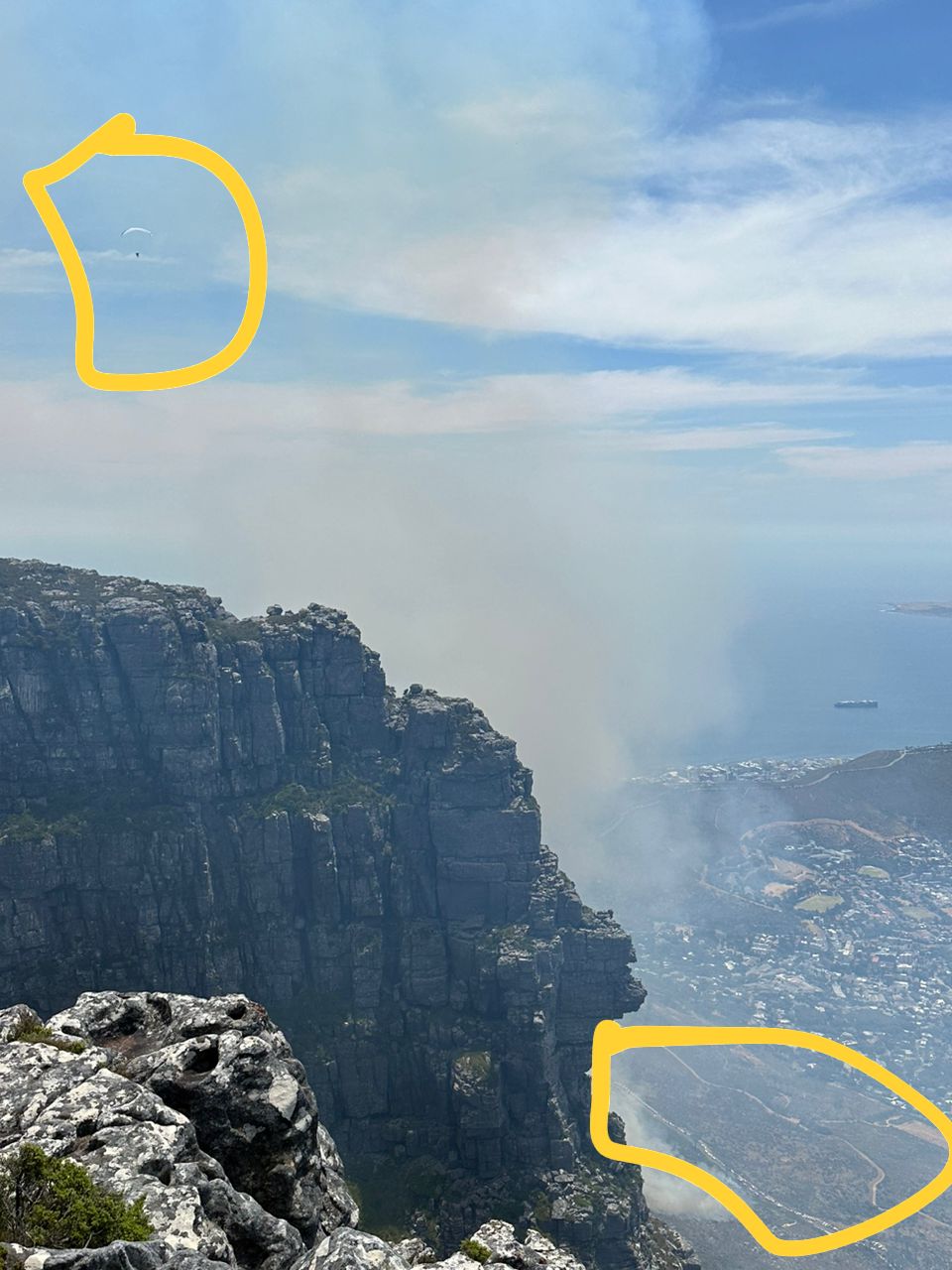
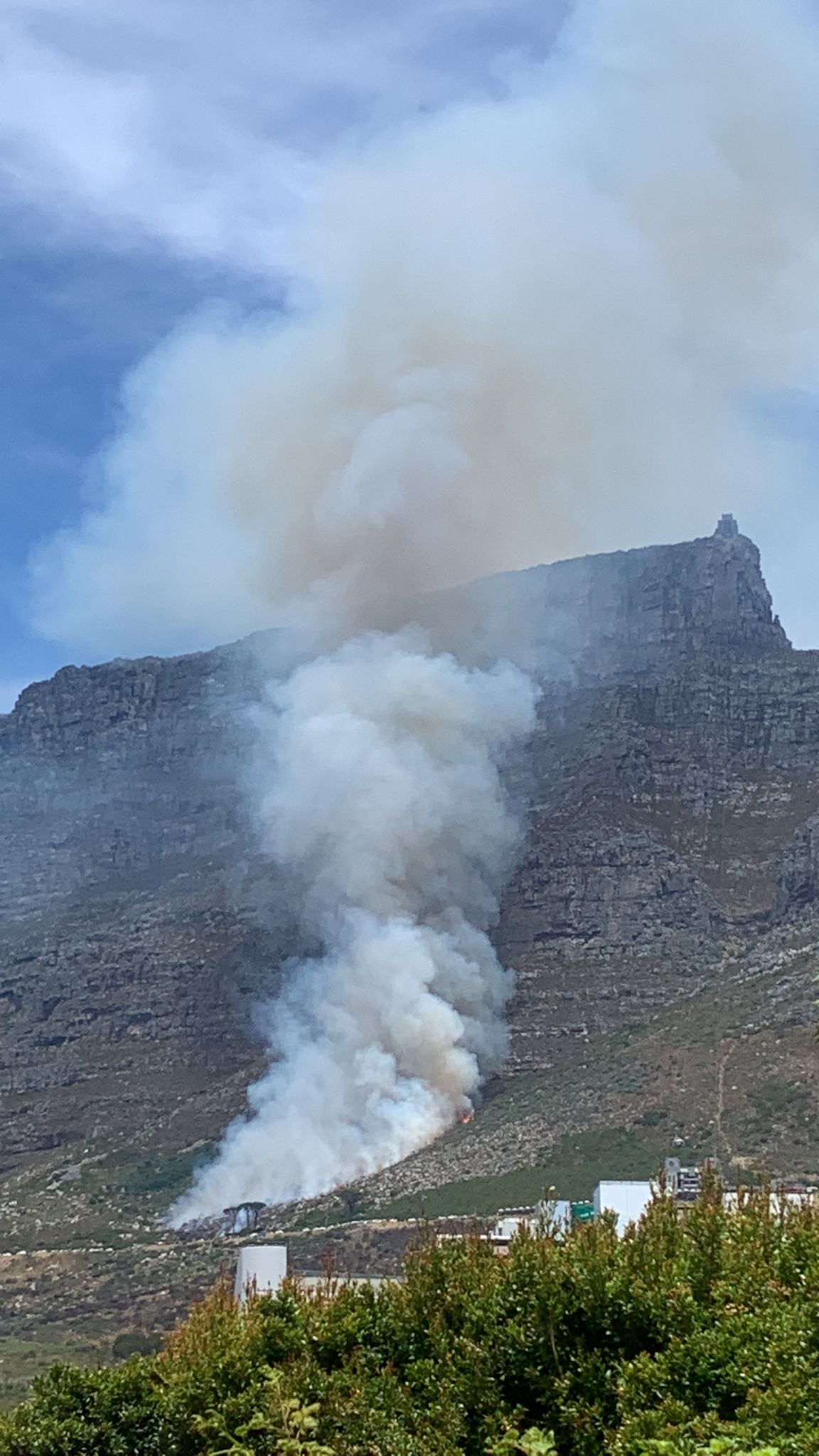
As a direct consequence of these incidents, all General Aviation and Recreational Aviation pilots face the very real prospect of a NOTAM being issued to close down airspace across parts of the Western Cape. It should not be necessary to elaborate how sensible and reasonable this NOTAM will be to SANParks, City of Cape Town and the Western Cape Government.
We therefore appeal to all recreational pilots to please take urgent measures to avoid interfering with fire-fighting operations. This may be especially frustrating for cross-country pilots who will find their favourite XC routes blocked by fire-fighting operations.
What the fire-fighting teams are dealing with
The number of fires breaking out across the Western Cape means that the fire-fighting teams are being allocated and re-assigned at short notice. The challenges for the fire-fighting crews are:
- They are under pressure to put out fires because lives and property are at risk
- They are flying low, picking up and carrying heavy loads of water under challenging conditions
- Smoke and smoke haze makes it challenging for them to see other aircraft
- There is only one pilot in the cockpit, which means no second set of eyes to scan for other traffic
- The pilot must keep track of other fire-fighting aircraft in the vicinity, and remain in direct contact with the spotter aircraft.
Unpredictable routes
The spider track for one of the helicopters operating at Table Mountain, collecting water from Camps Bay:
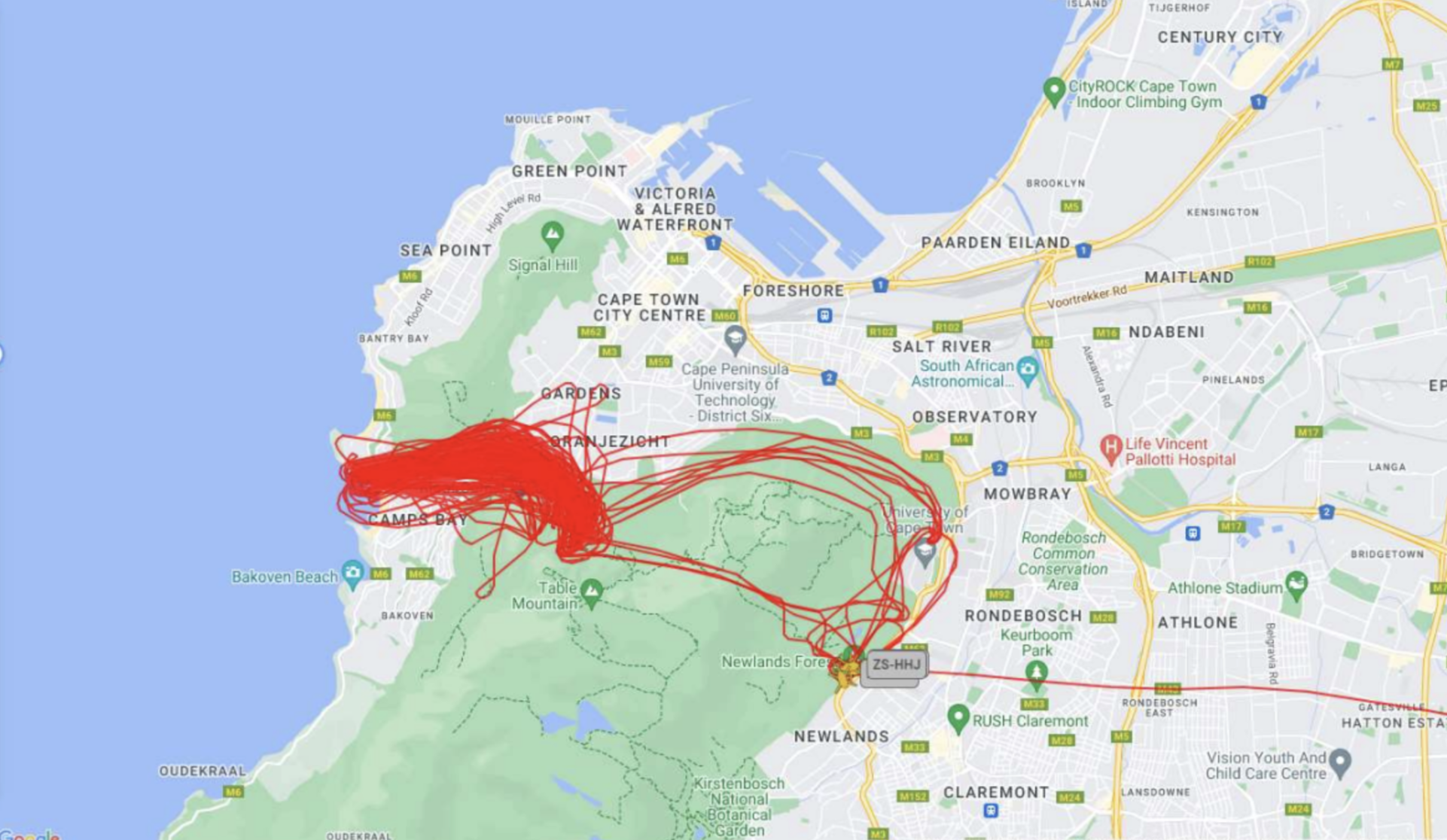
The spider track for one of the aircraft assigned to the Kluitjieskraal fire:
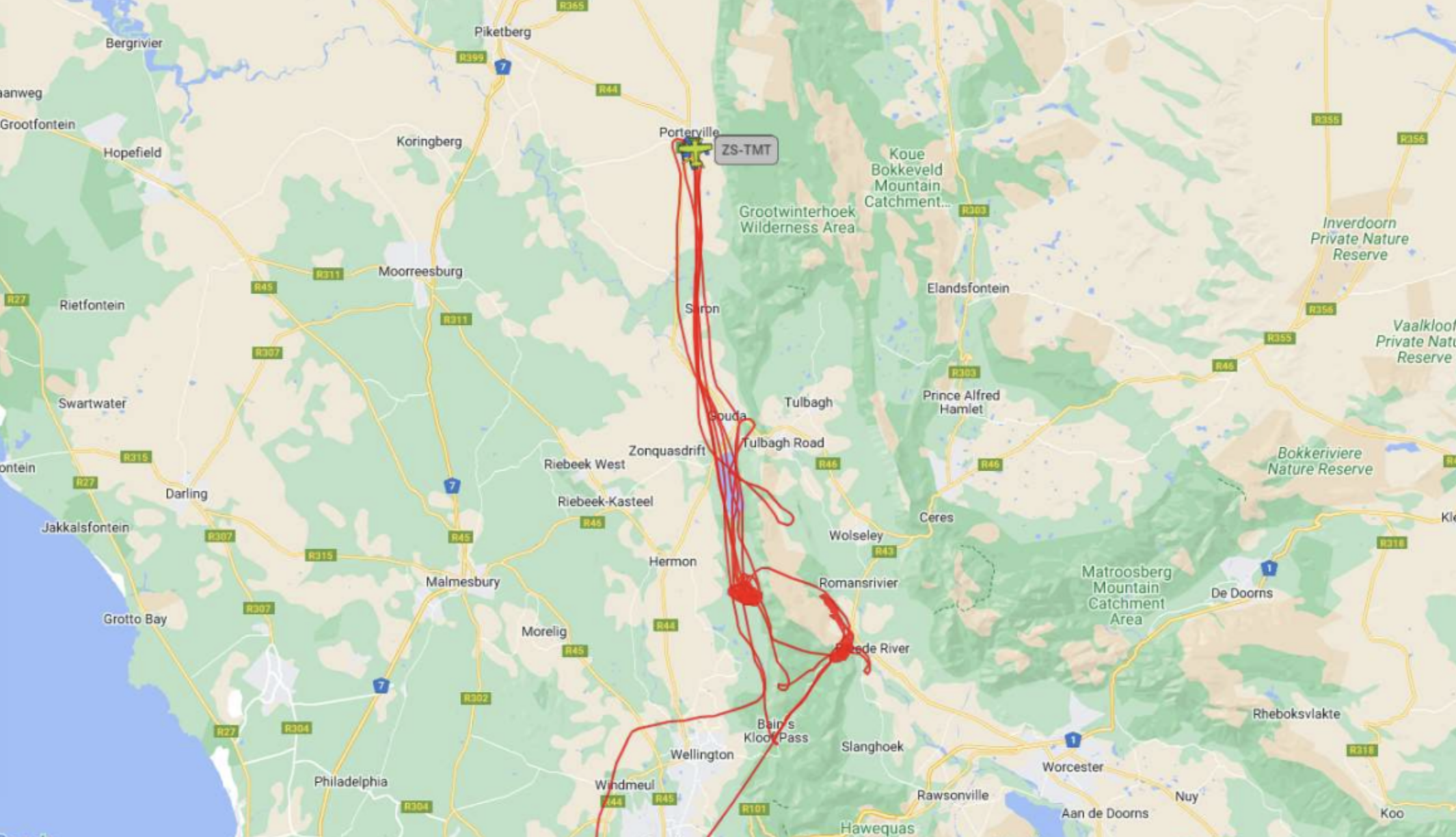
The consequences of a near-collision
The heavy helicopters being used for fire-fighting have a very powerful downwash and if they fly near a paraglider, the sheer force will not only cause a major collapse, but may also shred the paraglider fabric. Throwing a reserve parachute under these conditions will have little effect.
The fixed-wing aircraft operates at 160kts in low visibility, which increases the risk of a mid-air collision. This aircraft will be operating from the closest equipped aerodrome and will not be following the same routes as helicopters.
Map of fires reported in Cape Town on 19th January 2023
City of Cape Town Counsellor JP Smith recently posted about the significant and suspicious increase in fires across the Cape Town Metropole, stating:
“Over the last 24 hours, our advanced, business intelligence system (EPIC), which coordinates all our resources, our incidents, our response and our deployment, identified a startling abnormality. 282 instances of vegetation, grass or rubbish that has been set alight across our municipality, and while some may be attributed to negligence, such as the result of burning copper cabling, etc., many of these ignition points are far off the beaten track.”
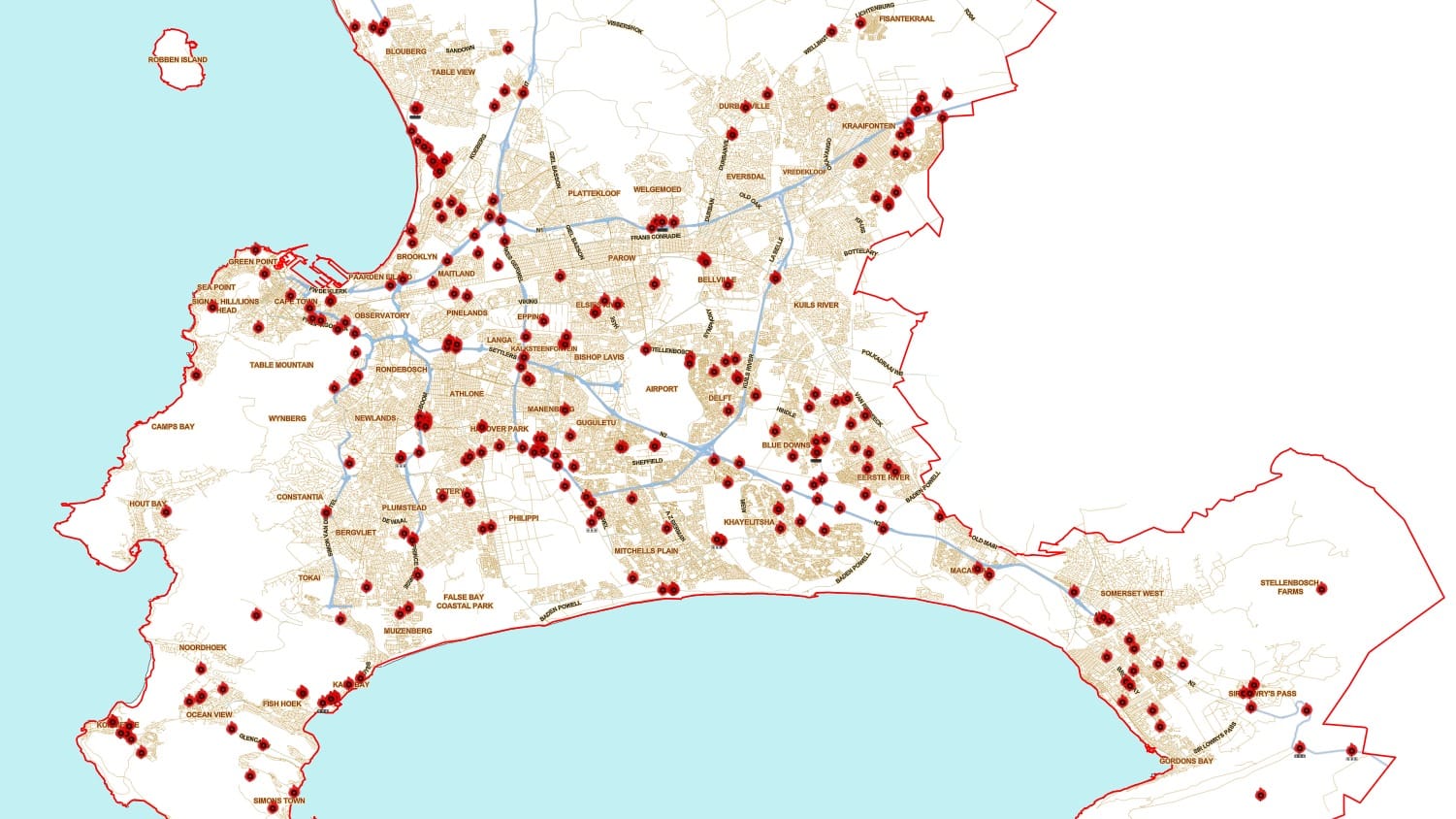
The SafeSky Initiative
SAHPA endorses the SafeSky initiative to improve air traffic awareness. SafeSky is an international platform which aggregates transponder information from various systems (ADB-S, FLARM etc) and consolidates these onto a single, consolidated view of nearby airspace.
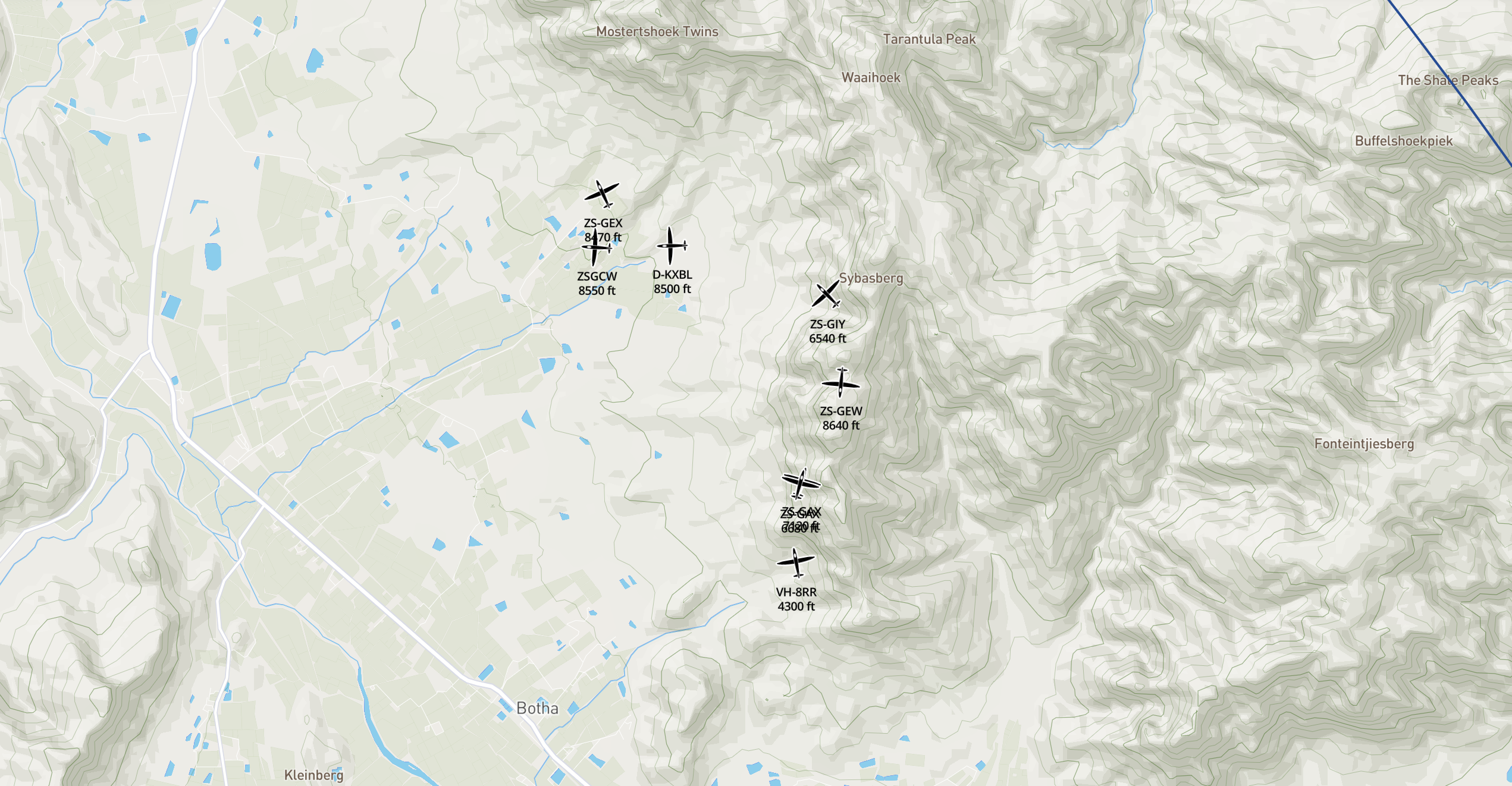
Many of the apps and devices in use (ie. GaggleApp, XTrack and others) already have SafeSky integration (although they may require that you enable the integration to publish your location).
Kishugu is using SafeSky to keep track of air traffic near to their fire-fighting operations, and will warn their fire-fighting teams. We therefore request that all SAHPA members consider implementing a SafeSky-compatible solution.
What you can do to help
- Stay far away (ie. 10NM, or 18km) from fires and fire-fighting activities. Kishugu has requested a radius of 10 nautical miles to give their teams sufficient space to operate safely. If a fire breaks out near to where you are flying, you can expect helicopters to arrive soon after. We therefore require that all Paragliding and Hang Gliding operations within a 10NM radius of a fire must cease flying immediately.
- Pay close attention to any helicopters and aircraft operating near you, and make a decision to land immediately (do not fly away as this will take too long).
- If you have a SAHPA radio, please keep it on. Helicopter pilots have been notified of the SAHPA frequency, but here it is for reference:
- 141.600MHz
- 141.625MHz
- Use a SafeSky-compatible app like XContest’s XTrack (Android only) or Gaggle App (Android and iOS) and make sure that SafeSky integration is enabled (it may be disabled by default) to ensure that your location is being transmitted to SafeSky. Kishigu operations will monitor SafeSky and notify their helicopter pilots.
- Reach out to fellow pilots on your Whatsapp groups and launch sites (including foreign pilots) and ensure that everyone is aware of the risks and protocol.
Fly safe,
Louis Stanford
SAHPA Chairman & Accountable Manager
M: + 27791439009
E: louis.stanford@gmail.com